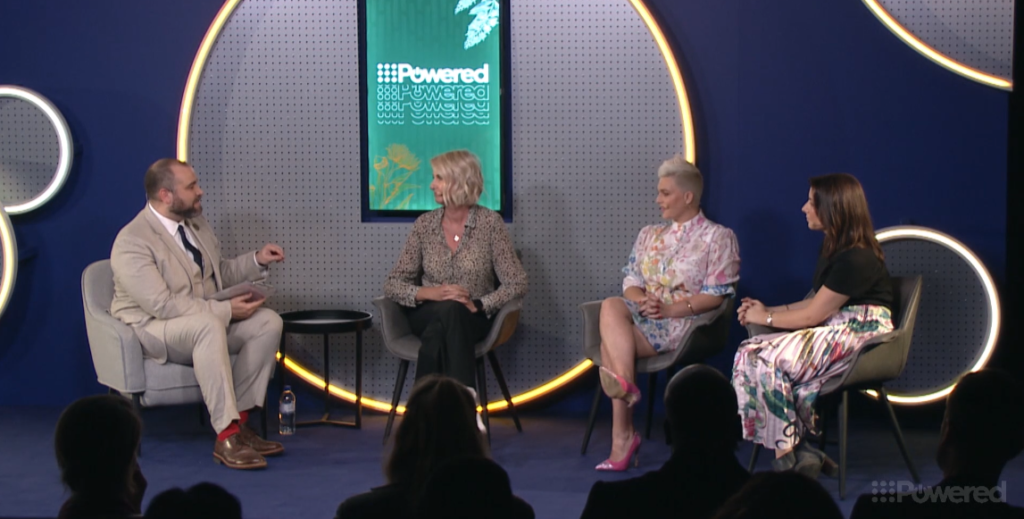Marketers told to embrace a new type of Christmas to avoid Santa’s naughty list

Marketers told to embrace a new type of Christmas to avoid Santa’s naughty list

Brands that help Australians connect with their community, display optimism and reject the notion of the perfect Christmas are best placed to spread festive cheer, according to Strategy Director for research company The Lab, Rebecca Brody.
During a panel discussing Christmas trends at Nine’s Big Idea Store, Unboxing Christmas, research from Powered by Nine and The Lab shows how the last year has reshaped consumers’ perspectives on Christmas and how marketers can capitalise on these trends
“You can do it beautifully right across the board, and we saw initiatives with companies like PayPal creating a store connecting local artisan small businesses with people at Christmas time. So they’re acting as an enabler of connection, or the big retailers stocking the smaller brands.”
Moderated by Toby Boon, Nine’s Director of Strategy, Insight and Effectiveness, the panel – featuring Associate Editor of Sunday Life magazine Genevieve Quigley, Food Editor of 9Honey and the Today Show Jane De Graaff, and Brody – discussed how the pandemic has caused a seismic social shift in the way Australians perceive luxury and indulgence, yearning for a stress-free Christmas and wanting to embrace imperfection.

The research shows consumers’ top three priorities are authenticity in themselves, and they demand the same of brands; they want to give themselves freedom of choice and support brands that bring those things to life; and they want to take things a bit easier and put a bit more simplicity into their lives.
“What we’re seeing overall in Australia is a real shift in increases in empathy, openness and tolerance,” said Brody. “It’s trickled down into some of the themes around Christmas, especially this thing of a ‘no-worries’ Christmas. We want to practise self-acceptance for ourselves and we want to be more inclusive of our community, which comes down to what we buy.”
Our idea of luxury in particular is being reframed and we’re being more thoughtful of what constitutes the idea of luxury and indulgence. Sustainability is increasingly becoming intertwined with luxury.

“I think when we’re talking about luxury, it’s not flashy luxury,” said Quigley. “Luxury is now more about you thinking about that particular gift – that it has meaning, and that’s it quality and will last, which feeds into sustainability.”
Boon added that a wonderful example of brands merging key consumer values is British retailer Primark, who provided paper shopping bags that could be used as wrapping paper to then go on and be recycled.
The research shows that this year Australians are giving themselves permission to go with the flow. Forty per cent of us are looking at a simpler Christmas, and a quarter of us will remain adaptable to changing circumstances and commit to remaining calm.
Nowhere is this more visible than in the kitchen. One in three Australians want to minimise stress in their approach to Christmas cooking and two-thirds of us are willing to take short-cuts in the kitchen to reduce stress. We no longer want to feel ashamed for not having the perfect roasted potatoes or the Insta-worthy table setting.

“It has to be easy this year,” said De Graaff. “I don’t think anyone has really had the perfect Christmas. It doesn’t exist, so stop trying to strive for it and embrace all the stuff around it.
“I remember one Christmas I had this perfect idea in my mind what that was, and I was determined to execute it. In my head it was a disaster on the day. My husband found me in the kitchen with a glass of champagne, shaking that it was disaster. He told me to look through the door at everyone having fun – the only person that could see that particular version of Christmas was me, in my head. I think I had collected all these moments over the years that formed a collage in my head of what a fantasy Christmas looks like.”
After a tough year, Australians no longer want to feel pressured to emulate the cookie-cutter, advertising version of what Christmas should look like. Brands need to better reflect a multicultural view of what the festive season looks like.
“I think it starts with brands diversifying how we represent Christmas and what a good-looking Christmas should look like,” said Brody. “There’s a very singular idea of ‘this is what a Christmas lunch looks like, what your house or tree should look like’. The more that brands can be showing a broader range of what Christmas might look like, it will move some of the expectation that everyone has to align to this one singular view.”

As marketers sit down and prepare for Christmas, they should focus on the real, honest experience of what the festive season really means for the average Australian.
“I think the main trend we’ll see this year is about being connected,” said Quigley. “Last year we felt so disconnected and this year will be all about being connected, and a focus on how we can come together.”
Brody agreed, adding that brands should “lead with optimism” this Christmas.
“Last year everyone was a little bit cautious and asking if it was a bit insensitive to be too festive,” she said. “We’re seeing signs of a real buoyant Australian community. People are feeling really optimistic and grateful of where we are in the world and what we have available.
“If you can connect into some of the core values around community and simplicity that people will be prioritising more this year, then that will be a winner. Keeping it local, keeping it connected and helping people maintain what’s really important will be the main focus.”






